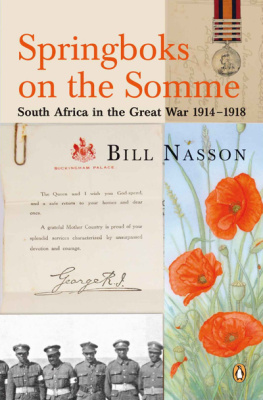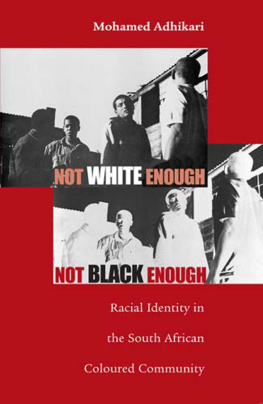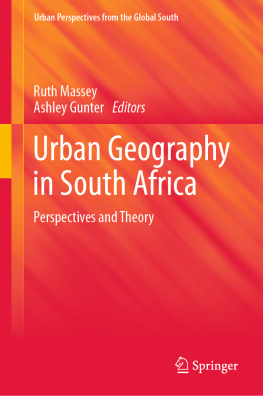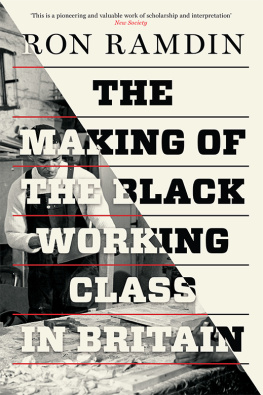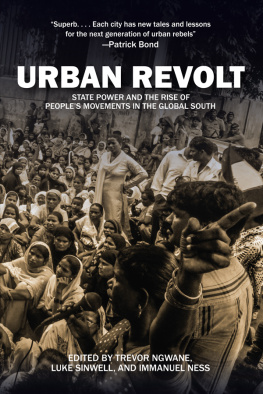African History Archive
Over the past forty years, Zed has established a long and proud tradition of publishing critical work on African issues, offering unique insights into the continents politics, development, history and culture. The African History Archive draws on this rich backlist, consisting of carefully selected titles that even now have enduring relevance years after their initial publication. Lovingly repackaged, with newly commissioned forewords that reflect on the impact the books have had, these are essential works for anyone interested in the political history of the continent.
Other titles in the archive:
A History of Africa
Hosea Jaffe
No Fist Is Big Enough to Hide the Sky: The Liberation of Guinea-Bissau and Cape Verde, 196374
Basil Davidson
The Story of an African Working Class: Ghanaian Miners Struggles 18701980
Jeff Crisp
About the author
Baruch Hirson (19211999) was a lifelong activist who spent nine-and-a-half years in South African prisons as a result of his opposition to the apartheid regime. Following his release in 1973 he left for England, where he lectured in history at several universities and produced eight finely written, passionately argued books on the history of the left in South Africa. These include Year of Fire, Year of Ash (1984), The Cape Town Intellectuals (2000) and his autobiography, Revolutions in my Life (1995). He also founded the controversial critical journal Searchlight South Africa .
Tom Lodge is professor of peace and conflict studies at the University of Limerick, Ireland. He was formerly professor of political studies at the University of the Witwatersrand, South Africa. He is the author of Mandela: A Critical Life (2006) and Politics in South Africa: From Mandela to Mbeki (2003).
Yours for
the Union
Class and Community Struggles
in South Africa
Baruch Hirson
With a new Foreword by Tom Lodge
Zed Books
LONDON
Yours for the Union: Class and Community Struggles in South Africa was first published in 1990 by Zed Books Ltd, The Foundry, 17 Oval Way, London SE11 5RR, UK.
This ebook edition was first published in 2017
www.zedbooks.net
Copyright Yael Hirson 1990
The right of Baruch Hirson to be identified as the author of this work have been asserted by him in accordance with the Copyright, Designs and Patents Act, 1988
Cover design: Kika Sroka-Miller.
All rights reserved. No part of this publication may be reproduced, stored in a retrieval system or transmitted in any form or by any means, electronic, mechanical, photocopying or otherwise, without the prior permission of Zed Books Ltd.
A catalogue record for this book is available from the British Library
ISBN 978-1-78699-064-8 hb
ISBN 978-1-78360-984-0 pb
ISBN 978-1-78360-983-3 pdf
ISBN 978-1-78360-981-9 epub
ISBN 978-1-78360-982-6 mobi
Contents
Photographs and Illustrations
Between pages 45 and 46
Page 52
Page 135
Between pages 135 and 136
Between pages 157 and 158
Page 164
Foreword by Tom Lodge
Written nearly fifty years after the story it tells, Yours for the Union focuses on South Africas black working class in its making. At the outset of his analysis, Baruch Hirson points to parallels between the status and treatment of workers in Czarist Russia and the experiences of many black South Africans. Both were first-generation migrants to the cities, often leaving their families behind in the countryside and retaining other kinds of affective connections with rural life. They were both without rights in their new settings and they would find their most natural solidarities and camaraderie around kinship ties, preserved through hometown associations. But in new workplaces and in the places in which they lived, these ties would assume fresh significance in defensive and sometimes assertive struggles against the treatment they received from employers and officials. Sometimes the associations and networks derived from clan and kinship performed bridging functions enabling workers to embrace wider kinds of collective action. This was most likely when leaders appeared who were able to combine ideas drawn from a moral order reinforced by direct experience and oral tradition and fresh notions based on structured ideas learned from others.
This books narrative is centred on the Witwatersrand home, more or less, to half a million Africans, mostly workers, though their numbers included a small petty bourgeoisie of traders, teachers and other white-collar workers, as well as a tiny elite of professionals. Aside from those who worked on the mines and who as mineworkers lived in strictly controlled compounds, most African workers were casual that is, often employed in insecure temporary jobs, and almost always unskilled: employed simply to lift, carry, clean and dig. Mineworkers were different, their contribution to the economy was of fundamental importance; hence the restrictions and controls that regulated their existence.
Efforts to organise South African workers remained focused on whites; in the early 1930s even revolutionary socialist groups believed that natives were only workers of the first generation, not really proletarianised, and too vulnerable and too inexperienced to undertake their own assertive class action. Certainly it was true that workers without legal rights were very difficult to organise, and people whose worldview was shaped by their rural upbringing remained very susceptible to prophetic charlatans.
But between 1932 and 1945, the period that supplies the setting for Hirsons narrative, fresh opportunities existed for this African workforce to make gains as a class. Devaluation after South Africa abandoned the gold standard created the conditions for an industrial boom, and a consequent rise in urban employment for Africans. South Africas declaration of war in 1939 supplied a second prompt in expanding manufacturing. In replacing 200,000 whites recruited into the army, Africans began to undertake semi-skilled or skilled work in factories for the first time. The declaration of war on Germany was politically divisive for white South Africans and opposed by Afrikaner nationalists; in this context, government was keen to secure the loyalty of its African subjects. In fact, a key reform had been enacted just two years before the war, when legislation extended wage boards to black workers; as Hirson notes, a springboard for efforts to build trade unions amongst them.
So, this was an unusually promising time for black South African workers, notwithstanding their recent assembly. For their numbers were growing in a political setting in which government was unusually predisposed towards conciliation and incorporation rather than direct repression, at least until the tide of warfare turned in favour of the Allies in 1944. And, as Hirson notes, there were a few activists, mainly though not only whites, who had self-consciously crossed the colour line; who, taking their dictum from Trotskys essay on unions in the epoch of imperialist decay, began to build effective organisations, step by step, around local wage struggles.
Not that the agency of external revolutionaries was indispensable to successful class assertions by black workers. Hirsons analysis of the Vereeniging protests against police raids of September 1937 and their aftermath supplies impressive evidence of the speed and effectiveness of communal self-mobilisation. Such actions were enabled, he thinks, through the communicative networks supplied by hometown organisations. Despite the violence of the riots and the repression that followed them, Vereeniging householders won concessions, and in forthcoming years a series of trade unions under local leadership undertook successful strike actions.




